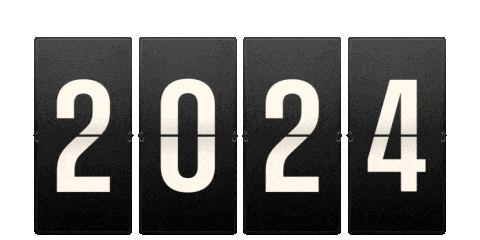
- Share via
Open a copy of the Los Angeles Times from Dec. 16, 1999, and it’s hard to imagine the indignities history had in store for this and so many other newspapers.
It was thick and fat and smelled of prosperity. The Los Angeles economy — battered for years by recession, civil unrest and a major earthquake — was booming again. Staples Center had just opened. Hollywood was experiencing a creative flowering, thanks to the independent film movement and edgier cable TV fare like HBO’s “The Sopranos.” The good times were reflected in the newspaper. The front section alone that day had two dozen full-page ads for then-mighty brands that would all be gone in little more than a decade: Robinsons-May, Circuit City, the Good Guys, Pontiac.
The 1999 Project
All year we’ll be marking the 25th anniversary of pop culture milestones that remade the world as we knew it then and created the world we live in now. Welcome to The 1999 Project, from the Los Angeles Times.
But at the very back of the “A” section was a warning. Alta Vista, a top pre-Google search engine, took out a page alerting newspaper readers that they could save money by ignoring all those ads and get better deals on its website.
Like The Times, the newspaper industry as a whole was riding high in 1999, at least on the surface. The big paper chains reported near-record profits that year. The emergence of the always-on broadband internet, the proliferation of cellphones and other chip-powered gadgets, and the popularity of novel online services inflated a tech bubble that fueled more of those full-page ads. Journalists wrote a lot about how technology was changing the world, but few of us understood how rapidly it would change journalism.
Newsprint remained a lucrative game, and local papers maintained such a dominant position in advertising, attention and influence that it seems hard to imagine in today’s world of Google, Facebook and Amazon domination. Newsrooms had their websites and fledgling e-commerce businesses, but they were sideshows at best. (The Times’ digital operation was located not in the grand Times Mirror Square downtown but in rented office space a block away.)

“I see nothing in the new technology — nothing coming out of Silicon Valley — that eliminates the need for newspapers and certainly for trained, responsible, ethical and aggressive journalists,” the chairman of the National Assn. of Newspapers told an audience in Washington a month earlier. “We believe that of all the traditional media, newspapers are in the best possible position to use the Internet.”
But behind the rosy corporate spin, there were some red flags. Many newspapers posted advertising gains, but the percentage of ads going to print versus other media was declining. Classified ads were shifting from print to the web. The Times was still regrouping after a round of 500 job cuts. A few years earlier the paper had hired a CEO from breakfast food giant General Mills to bring its finances into line. The newsroom derisively referred to him as the “cereal killer.” Growing revenue was the name of the game, and it took The Times down some strange roads, including a quixotic quest to make the paper smell better.
And it was this search for cash that led to one of the darkest chapters in L.A. Times history.
When Staples Center opened that October, the Los Angeles Times Magazine published a lavish special issue. It was a celebration not just of the Lakers’ and Kings’ new home but of the revival of downtown Los Angeles it promised to unleash. It was the largest magazine the paper ever published and generated $2 million in revenue.

But it was later revealed by competitors that the paper had secretly entered into a profit-sharing agreement with Staples Center for the magazine, a conflict of interest that sparked protests by Times journalists who’d written for the magazine without knowing about the deal as well as head-shaking from many readers.
On Dec. 20, The Times published a massive self-examination that broke down what went wrong. It ran 14 pages as a special section without a single ad. The episode left the newsroom shaken and the newspaper’s credibility damaged, and it sparked a more frank discussion inside The Times about financial pressures. “Money is always the first thing we talk about,” one senior editor said in the piece. “The readers are always the last thing we talk about.”
In L.A. Times scholarship, the Staples scandal is seen as the first sign of the epic decline to come. Three months later, the Chandler family shocked everyone (including the “cereal killer”) by selling The Times to Chicago-based Tribune Publishing. The Chicago Tribune was smaller than the Los Angeles Times, but its parent company was considered much better at boosting profit margins. It was a humbling moment at Times Mirror Square, where so many employees had spent their whole careers supported by the paper’s ample profits that some dubbed it “the velvet coffin.”

It would take a few more years for the wheels to begin coming off. People increasingly read their news on the computer and eventually their phones. Newspaper circulation plunged, along with advertising. E-commerce decimated some of The Times’ biggest advertisers, while Craigslist took over the classified ad business seemingly overnight. When venerable department store chain Robinsons-May shut down, one of my bosses ruefully quipped, “Well, there goes another 100 newsroom jobs.” Indeed, the newsroom staff was slashed in half within just a few years.
But how much of this could we see in 1999?

I recently talked to a colleague who was then a senior leader at the paper and had a front-row seat to the Staples scandal. She reminded me that we were so used to working at a place, in an industry, built on profitability that we could not even imagine a world that didn’t revolve around the paper hitting the doorstep each morning. So we failed to recognize that the technology revolution we covered every day would one day come for us.
Our certainty drove our journalistic purpose, but it also blinded us.
In that Dec. 16 edition, no product was more ubiquitous than the cellphone, with 14 separate ads. The versions being pushed then were clunky bricks with big plastic buttons, little antennas and tiny gray screens that could barely fit 10 digits, but their presence nonetheless presaged the transformation of mobile devices from cool curiosity to cultural mandate to the means by which most L.A. Times readers would get their news.

Yes, there were Cassandras back then who saw where this was going and urged newspapers to prepare.
But that was no match for the love so many of us shared for the physical paper — that “daily miracle” that arrived at your door each morning and focused your mind on the day ahead more effectively than even the strongest triple-shot espresso. Sure, people were starting to text on their cellphones, eagerly await those three words “You’ve got mail” and even buy books on their computers. But the morning newspaper habit — that was too powerful, too sacred a bond to ever break.
At least that’s what we thought.
Which brings us to one of those glorious full-page ads from that day in 1999.
Sprint was selling Nokia phones as stocking stuffers, and the copywriters penned some hyperbolic copy that turned out to be a prescient understatement, at least for newspapers.
“Get the last great deal of the millennium.”
More to Read
The biggest entertainment stories
Get our big stories about Hollywood, film, television, music, arts, culture and more right in your inbox as soon as they publish.
You may occasionally receive promotional content from the Los Angeles Times.













